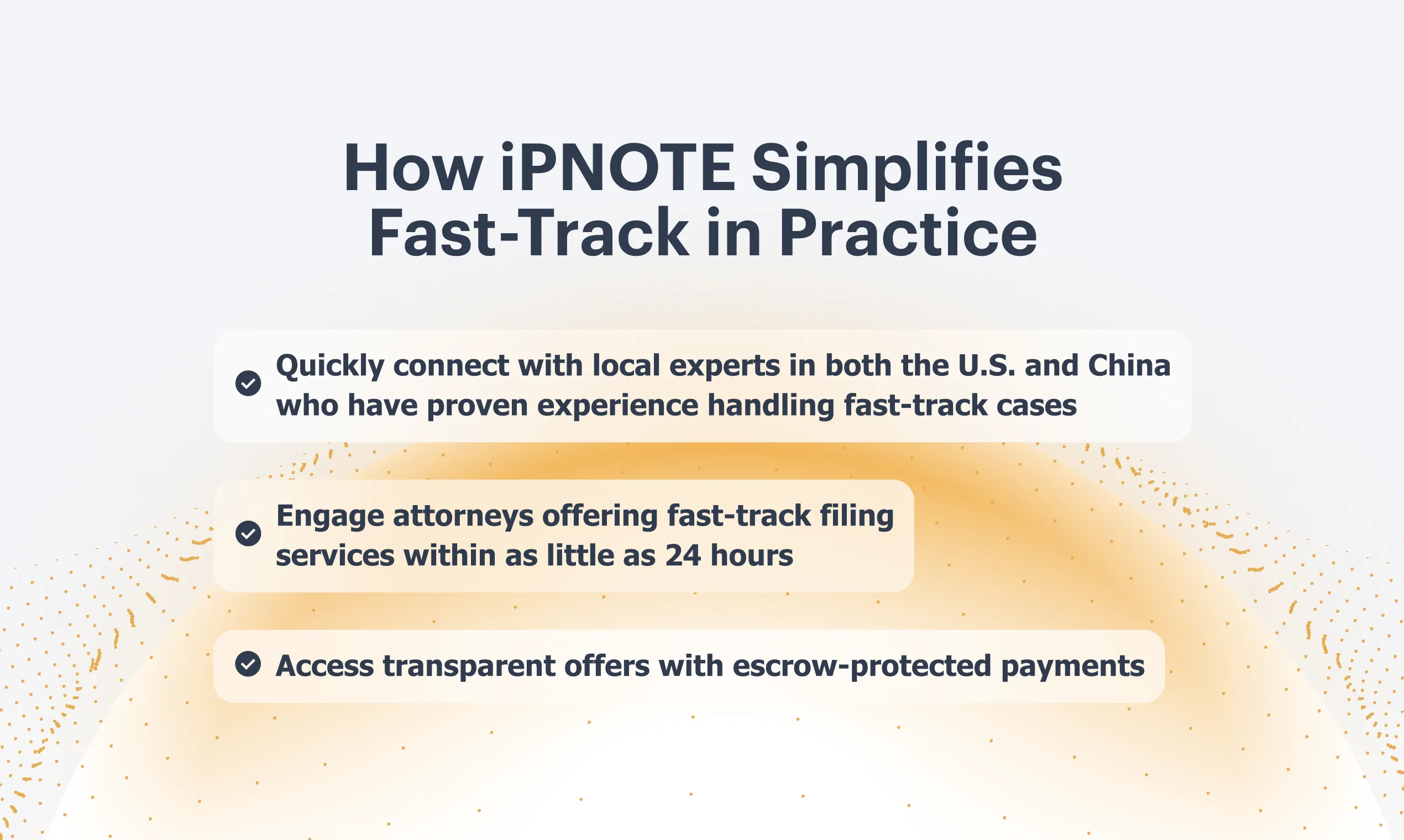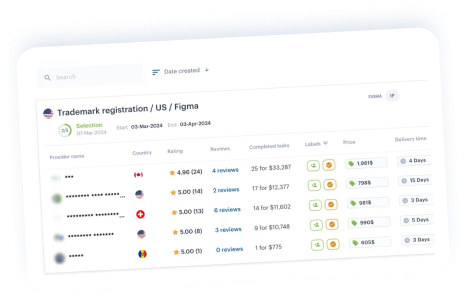Why Fast-Track Matters and Where It Works
In intellectual property, speed can be critical. Businesses often need protection before a product launch, when seeking investments, or while fighting copycats. Waiting years for registration can mean missed opportunities, market losses, or weakened enforcement. That’s why many innovators turn to fast-track or accelerated examination procedures. However, the reality of fast-track options varies significantly between countries. In the United States, acceleration is available only under narrow exceptions, while in China, structured fast-track mechanisms are increasingly common, especially for trademarks and designs.
United States: What Really Speeds Up in 2025
For trademarks in the U.S., there is no universal fast-track procedure. The only way to move a case “out of turn” is by filing a Petition to Make Special under 37 C.F.R. §2.146. This petition is reserved for extraordinary situations, such as the risk of significant rights loss or urgent business needs. Even if granted, it only accelerates the start of examination; once a refusal is issued, the response timeline follows the regular process. Businesses should anticipate low approval rates and carefully evaluate the benefits and risks before filing.
For industrial designs, the long-standing Rocket Docket program (37 C.F.R. §1.155) that allowed expedited examination has been suspended as of April 17, 2025. The only remaining route to acceleration is through petitions for “special status” under 37 C.F.R. §1.102(c), which are limited and narrowly interpreted. As a result, applicants seeking efficiency should focus on filing error-free applications with flawless drawings and consistent shading, removing potential grounds for refusal before submission, and considering the Hague System to cover multiple jurisdictions, even though it does not itself accelerate review.
China: Where Fast-Track Really Works
In China, the Measures on Prioritized Examination apply to both patents and designs. Fast-track examination is granted when:
- applications are technologically significant
- ready for commercialization
- connected to infringement cases
- supported by industry priorities
In practice, applicants often need a recommendation from a regional intellectual property office. Although approval is not automatic, the system provides a transparent and structured framework that significantly shortens processing time.
For trademarks, new Rules on Accelerated Examination issued by the CNIPA in July 2025 allow examination to be completed within approximately 20 working days once a request is approved. Acceleration is available when:
- rights are urgently needed for enforcement
- business activities or projects require fast confirmation
- sufficient supporting evidence is provided
Applicants must include a complete set of documents, including grounds for acceleration, classification details, and proof of urgency.
Preparing for Fast-Track: What to Collect in Advance
For U.S. trademarks, applicants must provide a strong justification of urgency, proof of potential harm if delayed, and a correctly filed application free of errors. The petition should be submitted before the ordinary examination begins. For U.S. designs, flawless reproductions with consistent linework, proper shading, and no ambiguities are essential, and Hague filings should be considered for broader coverage.
In China, applicants for design protection should prepare evidence of commercialization or economic impact, confirmation of industry priority status, and, if necessary, a recommendation letter from a regional IP authority. For trademarks, they must include legal grounds for acceleration, a comprehensive evidence package, and correctly classified and described goods or services.
Common Mistakes and Bottlenecks
Many applicants make the mistake of assuming that a universal fast-track exists for U.S. trademarks, even though petitions for expedited treatment are rarely approved. Others attempt to use the suspended Rocket Docket for designs. In China, foreign applicants sometimes fail to appoint a local trademark agent, which is mandatory, or submit incomplete documentation for prioritized examination. Across all jurisdictions, sloppy drawings, incorrect classifications, and missed deadlines for responses are the most common reasons for delays or rejections.
Realistic Timelines and Expectations
In China, once a trademark fast-track request is approved, applicants can expect examination to be completed within about 20 working days. In the U.S., a successful petition may accelerate the start of review, but any subsequent refusals proceed on the normal timeline. For U.S. designs, without the Rocket Docket, the only way to achieve faster results is through a perfect initial filing that avoids office actions altogether.
Fast-track procedures may seem complex, but with iPNOTE they become much more manageable. The platform enables users to:

Through a single dashboard, users can monitor deadlines, receive automated reminders, and track case statuses, saving time, reducing stress, and giving startups access to the same high-quality tools trusted by larger companies.
Final Takeaways and Next Step
Fast-track procedures are real and effective, but their impact varies. In the United States, acceleration is available only under narrow conditions, while in China, well-structured mechanisms make it possible to genuinely shorten timelines. The key to success lies in submitting perfect applications, establishing clear legal grounds, and working with experienced local experts. To fast-track your intellectual property rights, create a task on iPNOTE today and connect with trusted professionals who will handle every step from start to finish.






